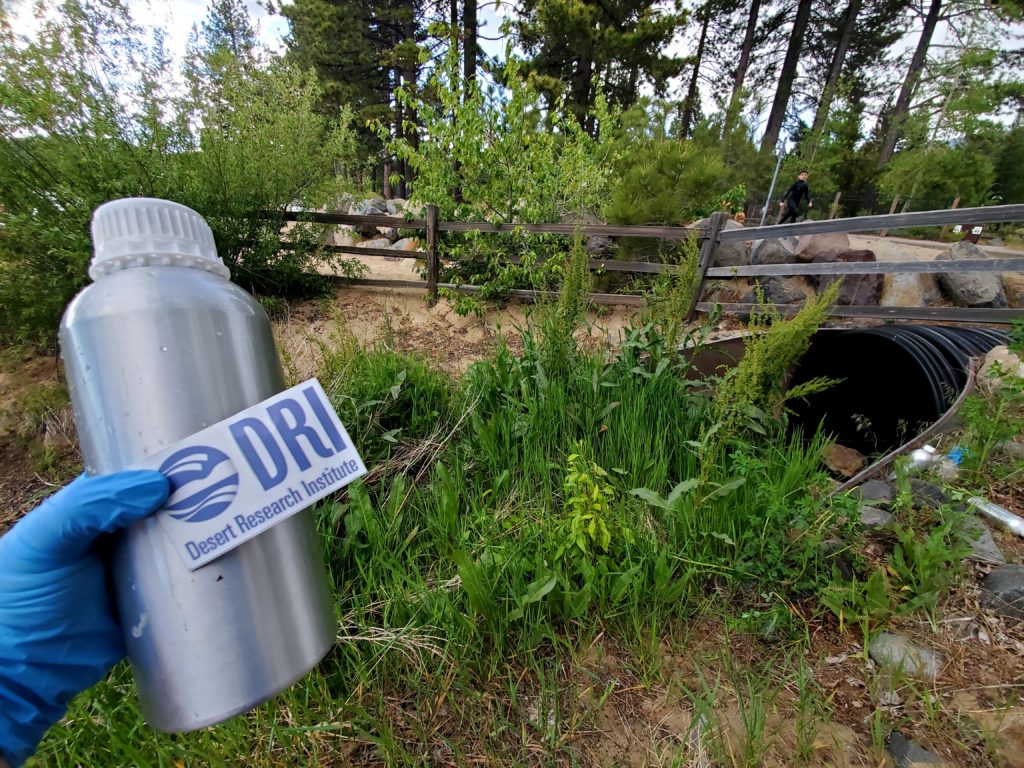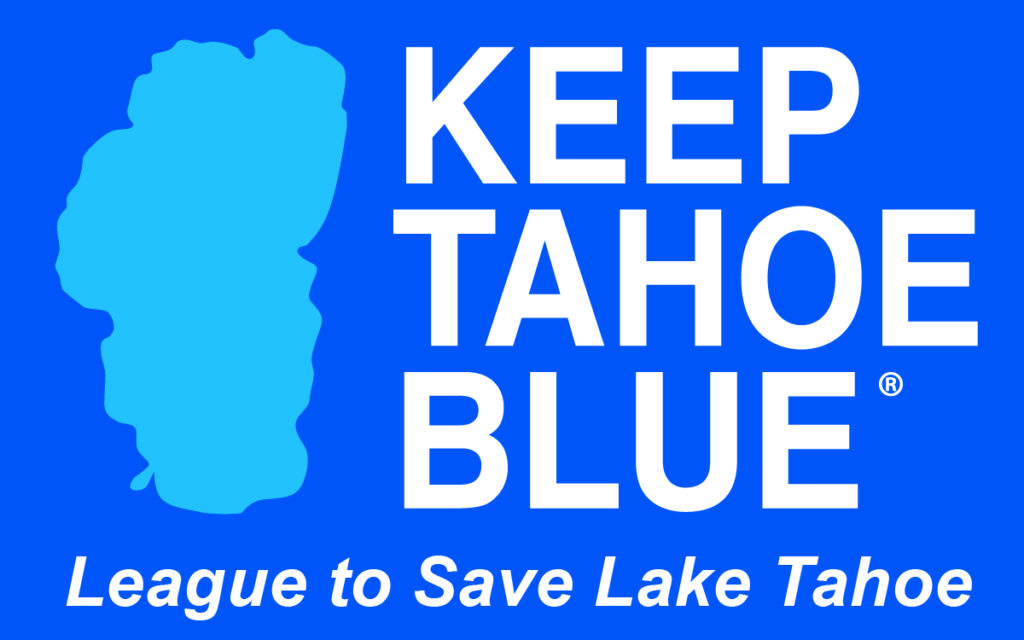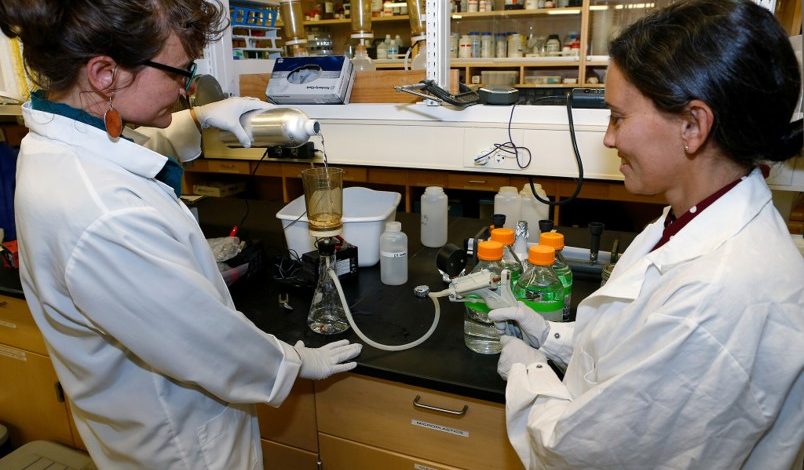New study investigates link between clothes dryers and microplastic pollution in Lake Tahoe
Last year, Desert Research Institute (DRI) and the League to Save Lake Tahoe detected microplastics in Lake Tahoe for the first time ever, many of which were microfibers. This discovery revealed that microplastic pollution is not just present in oceans, but also in mountains and lakes, including highly protected areas like Lake Tahoe.

In 2019, League to Save Lake Tahoe volunteers collected water and sediment from Lake Tahoe stormwater pipes and beaches to be analyzed by DRI scientists for microplastics. (Photo credit: M. Walsh)
Now, two DRI scientists aim to identify the source of these microfibers, with help from the League to Save Lake Tahoe’s citizen scientists and other volunteers from the Tahoe Basin. In a study that launched last week, volunteers from around the Tahoe region are installing specially made lint-catchers on the vents of their clothes dryers to assess whether dryers are releasing these tiny fibers into the environment.
“Several studies have been done on the washing process and how that can input microplastics into our waterways, but only a few studies have look at the drying process as a source of microplastics,” said Monica Arienzo, Ph.D., Assistant Research Professor of Hydrology at DRI. “That got us thinking about studying the drying process as a source of microplastics to the air.”
Working in collaboration with Meghan Collins, M.S., DRI’s Education Program Manager, the researchers developed a design for a lint-catcher that fits on the outside of a dryer vent. They then worked with the League to Save Lake Tahoe to create a plan for engaging citizen scientists in the study, tapping into the League’s network of dedicated Pipe Keepers and other volunteer groups.
Citizen scientists, including those who are brand new to volunteer data collection and research, can contribute to the study in one of two ways: 1) By sharing their drying habits with the researchers (how many loads they dry, dryer settings, and other details) for a month via the Citizen Science Tahoe app, or 2) By installing a lint catcher on the dryer vent on the outside of their home and sharing their drying habits.
The study will run from July 12 until August 7, at which time participants will mail back a custom-made fiberglass mesh net that sits inside the dryer vent cover, and researchers will analyze the contents.
“We will use all of this information to understand the connection between synthetic clothes, dryers, and microfiber emissions into the environment,” Collins said. “We are also hoping that our lint catcher design will provide an easy solution for helping individuals to reduce their ‘microplastic footprint’. We’re excited to see what citizen scientists think about this solution.”
While litter of all types poses a threat to the Lake Tahoe environment, plastic trash is consistently the most-gathered class of litter items at Keep Tahoe Blue beach and community cleanups. Plastic trash may breakdown to create microplastic pollution, which can end up in the Lake.
“Our hope is that this and future studies will narrow in on the sources of microplastic pollution at Tahoe,” noted Jesse Patterson, Chief Strategy Officer at the League to Save Lake Tahoe.
“Combined with litter data gathered by Keep Tahoe Blue volunteers, we hope to convert the findings into solutions to the pollution problem facing our Lake. This is only possible through the partnership of research experts at DRI and passionate citizen scientists.”
This project is made possible in part by support from the REI Co-op.



